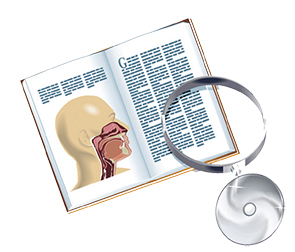 TRIO Best Practice articles are brief, structured reviews designed to provide the busy clinician with a handy outline and reference for day-to-day clinical decision making. The ENTtoday summaries below include the Background and Best Practice sections of the original article. To view the complete Laryngoscope articles free of charge, visit Laryngoscope.com.
TRIO Best Practice articles are brief, structured reviews designed to provide the busy clinician with a handy outline and reference for day-to-day clinical decision making. The ENTtoday summaries below include the Background and Best Practice sections of the original article. To view the complete Laryngoscope articles free of charge, visit Laryngoscope.com.
Explore This Issue
December 2015Background
Chronic nasal obstruction can significantly impair patients’ quality of life and is a frequent complaint seen by otolaryngologists. Inferior turbinate hypertrophy is a common cause of chronic nasal obstruction. Various etiologies for the hypertrophy of inferior turbinates include allergic reactions, nonallergic rhinitis, chronic hypertrophic rhinitis, and compensatory hypertrophy as seen in septal deviation. Conservative medical treatment options include topical decongestants and corticosteroids, antihistamines, systemic decongestants, mast cell stabilizers, and immunotherapy. However, in patients who have failed medical management, surgical reduction of the inferior turbinates is an effective treatment.
Many surgical techniques exist to reduce the size of the inferior turbinates. Conventional surgical options include partial or total turbinectomy, turbinoplasty, electrocautery, cryotherapy, laser cautery, submucosal resection, and submucosal resection with lateral displacement. Newer techniques include radiofrequency-assisted turbinoplasty, microdebrider-assisted turbinoplasty, and ultrasound turbinate reduction. There is no consensus as to which surgical technique is most effective in decreasing nasal obstruction.
Best Practice
Of conventional inferior turbinate reduction techniques, submucosal resection combined with lateral displacement is the most effective at decreasing nasal obstruction caused by inferior turbinate hypertrophy. In the turbinoplasty group, based on the current evidence, microdebrider-assisted and ultrasound turbinate reduction have been shown to be the most effective. A prospective randomized trial comparing the microdebrider-assisted and ultrasound turbinate reduction has not yet been performed. Little research exists on the ultrasound procedure; thus, the microdebrider-assisted turbinate reduction technique has the advantage of more widespread familiarity (Laryngoscope. 2014;124:814-815).